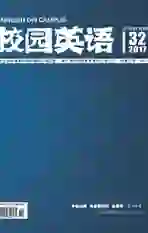Translation Equivalence in Two Chinese Versions of a Letter to Lord Chesterfield
2017-10-25梁媛
梁媛
【Abstract】A Letter to Lord Chesterfield, by Samuel Johnson, was written for an attack to Lord Chesterfields recommendation of Johnsons “Dictionary of the English Language”. Johnson wrote this famous Letter to achieve a satirical purpose. Two Chinese versions of this letter are compared in terms of Translation Equivalence.
【Key words】stylistic equivalence; social-cultural equivalence; linguistic equivalence
A Letter to Lord Chesterfield, by Samuel Johnson, was written for an attack to Lord Chesterfield. At first, Chesterfield indicated that he could be Johnsons patron. While Johnson needed concrete help, what he received was neglect and insults. When the Dictionary was about to publish after seven years, Chesterfield openly recommended it, hoping to get some credit for it. Johnson wrote this Letter to achieve a satirical purpose. This article, in terms of Translation Equivalence, aims to compare two Chinese versions by Gu Zhengkun(辜正坤) in classical Chinese and Luo Luojia(罗珞珈) in vernacular.
1. Translation Equivalence
Equivalence is the theoretical base on which the act of translation can be performed. Translation equivalence between source text (ST) and target text (TT) is the concrete equivalence a translator intends to establish in his translation. As the criterion for judging the quality of translation, Translation Equivalence is composed of stylistic equivalence, socio-cultural equivalence and linguistic equivalence.
2. Comparison of Two Versions
2.1 Difference in Stylistic Equivalence
Whenever a text is produced, it bears the marks of style, both the style of its genre and the style of its producer. It is obvious that the Letters stylistic feature results from the fashionable use of classical language in 1750s as well as Johnsons habitual use of Latin writing style. The Latin writing style to English is what the Classic Chinese to Mandarin.
Example:
“…being very little accustomed to favours from the great, I know not well how to receive, or in what terms to acknowledge.”
Gus:奈何在下不慣贵人垂青,茫然不知何以领受、何辞逊谢。
Luos:本人素乏伟人提携奖励,骤得恩宠,惶恐万分,不知该如何承受,如何致谢,始得其当也。
Lous version mainly adopts vernacular with several Classical Chinese words which are permeated in Gus Classic Chinese version. Gus words chosen are terse and concise. The phrase of “favours from the great” is transfer into a four-character phrase in Gus(贵人垂青), but ten characters in Luos(伟人提携奖励,骤得恩宠).endprint
2.2 Difference in Social-cultural Equivalence
In John Lyons view, “the language of a particular society is an integral part of its culture, and that the lexical distinctions drawn by each language will tend to reflect the culturally-important features of objects, institutions and activities in the society in which the language operates.” In Johnsons Letter, an allusion is quoted to show the writers disappointment.
Example:
“The shepherd in Virgil grew at last acquainted with Love, and found him a native of the rocks.”
Gus:维吉尔笔下牧童终与爱神相识,方知爱神原只是草野之夫.
Luos:维吉尔诗中之牧羊童子,最后虽有幸结识爱神,但早已奄奄一息,僵卧于野,为时晚矣!
Luos translation indicates that the Love is dead, which appears an obvious misunderstanding of the original meaning. By contrast, Gus version catches the original intention.
2.3 Difference in Linguistic Equivalence
Linguistic equivalence includes grammatical, semantic and pragmatic equivalence. The semantic equivalence serves as the fundamental one in the process of translating and starts from lexical equivalence and ends at textual equivalence.
Example:
“Is not a Patron, my Lord, one who looks with unconcern on a man struggling for life in the water, and, when he has reached ground, encumbers him with help? ”
Gus:設有人于溺水者奋命中流之际,漠然相对,视若无睹,伺其安全抵岸,方忽急伸援手,反增累赘,所谓赞助人也者,莫非即此辈耶?
Luos:阁下,世之所谓恩主者,岂见溺不救,任其浮沉,不加理睬,及其登岸,又伸以援手,示以关切者之流耶?
Compared Gus and Luos version, the phrase “encumber (him) with help” in the Letter is handled in totally different ways. In Luos translation, this part is abandoned while in Gus version it is conveyed properly in a four-character phrase.
3. Conclusion
Judging by the criterion mentioned, though Gus version was in archaism and Luos in vernacular, their translations attain as much translation equivalence as possible between source text and target text.
References:
[1]邵志洪.翻译与理论[D].华东理工大学,2007.endprint
